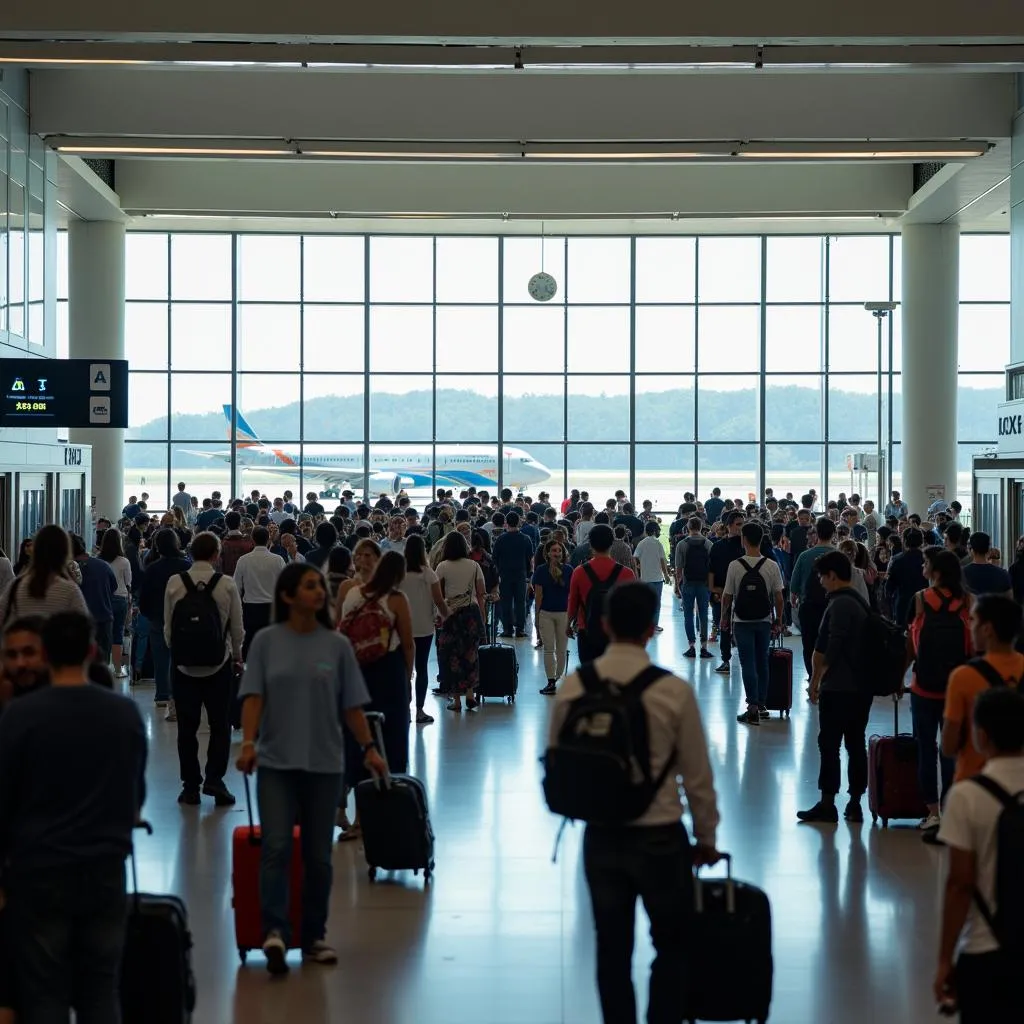Brazil, with its sprawling landscapes and vibrant culture, relies heavily on its network of airports to connect its bustling cities and far-flung corners. Whether you’re a seasoned globetrotter or planning your first Brazilian adventure, understanding the naming conventions of Brazil Airport Names can be highly beneficial for a smooth travel experience. This comprehensive guide will equip you with the knowledge to confidently navigate Brazil’s aerial gateways.
Decoding the System: How Brazilian Airports Are Named
Brazilian airports, like those in many parts of the world, employ a standardized naming system that blends location specificity with historical and cultural relevance. This system ensures clarity and avoids confusion, particularly in a country as vast as Brazil.
Location, Location, Location: Identifying the City or Region
The most common approach to naming Brazilian airports is by directly referencing the city or region they serve. This straightforward method makes it instantly recognizable for travelers. For instance, São Paulo-Guarulhos International Airport (GRU), the busiest airport in Brazil, clearly indicates its location in the city of São Paulo. Similarly, Rio de Janeiro/Galeão International Airport (GIG) leaves no ambiguity about its association with Rio de Janeiro.
Honoring Legacy: Airports Named After Notable Figures
Brazil also pays homage to its prominent historical figures by naming airports after them. This practice adds a layer of cultural significance and national pride to air travel. A prime example is Santos Dumont Airport (SDU) in Rio de Janeiro, named after the celebrated Brazilian aviation pioneer, Alberto Santos-Dumont. This naming convention not only commemorates influential individuals but also provides a glimpse into Brazil’s rich history and heritage.
 Santos Dumont Airport in Rio de Janeiro
Santos Dumont Airport in Rio de Janeiro
Navigating the Variations: Understanding Airport Codes
While airport names provide geographical context, airport codes serve as concise identifiers used in booking flights, tracking luggage, and managing air traffic. Familiarizing yourself with these codes can streamline your travel planning.
IATA Codes: Your Ticket to Seamless Travel
The International Air Transport Association (IATA) assigns three-letter codes to airports worldwide, commonly known as IATA codes. These codes are ubiquitous in the aviation industry and appear on flight tickets, boarding passes, and baggage tags. For example, if you’re flying into São Paulo, you’ll likely encounter the code GRU for São Paulo-Guarulhos International Airport. Understanding these codes is crucial for accurate booking and itinerary management.
ICAO Codes: The Behind-the-Scenes Navigators
The International Civil Aviation Organization (ICAO) utilizes a separate system of four-letter codes for airport identification, primarily for air traffic control and aviation regulations. While travelers may not encounter these codes as frequently as IATA codes, they play a vital role in ensuring safe and efficient air travel operations.
Common Questions About Brazil Airport Names
To further assist you in navigating Brazil’s airport landscape, let’s address some frequently asked questions:
1. What is the largest airport in Brazil?
The largest airport in Brazil, in terms of passenger traffic and physical size, is São Paulo-Guarulhos International Airport (GRU).
2. Are there any airports in Brazil with multiple names?
Yes, some Brazilian airports are known by multiple names, often reflecting both their geographical location and any historical figures they may be named after. This practice can sometimes lead to confusion, highlighting the importance of verifying airport codes when booking flights.
3. How early should I arrive at the airport for international flights from Brazil?
It’s generally recommended to arrive at the airport at least three hours prior to your scheduled departure time for international flights from Brazil. This allows ample time for check-in, security checks, and any unforeseen delays.
 Crowded Airport Terminal in Brazil
Crowded Airport Terminal in Brazil
Exploring Further: Additional Resources for Air Travelers
For travelers seeking a comprehensive list of airports in Brazil, the “up airport name list” provides a valuable resource. Additionally, those interested in international airports named after aviators can find insightful information at “international airport named after an aviator.”
Ready for Takeoff: Embark on Your Brazilian Adventure
Armed with this knowledge of Brazil airport names and codes, you’re well-prepared to embark on your Brazilian adventure. Whether you’re captivated by the vibrant energy of Rio de Janeiro or the cultural tapestry of São Paulo, understanding the nuances of Brazil’s airport system will ensure a seamless and enjoyable travel experience.
Remember to double-check airport codes during booking, arrive at the airport with plenty of time to spare, and embrace the spirit of adventure as you explore all that Brazil has to offer.
For any inquiries or assistance with your travel plans, please don’t hesitate to contact our 24/7 customer support team at +13089626264, email us at [email protected], or visit us at 404 Bothwell St, Oxford, NE 68967, USA. Safe travels!

